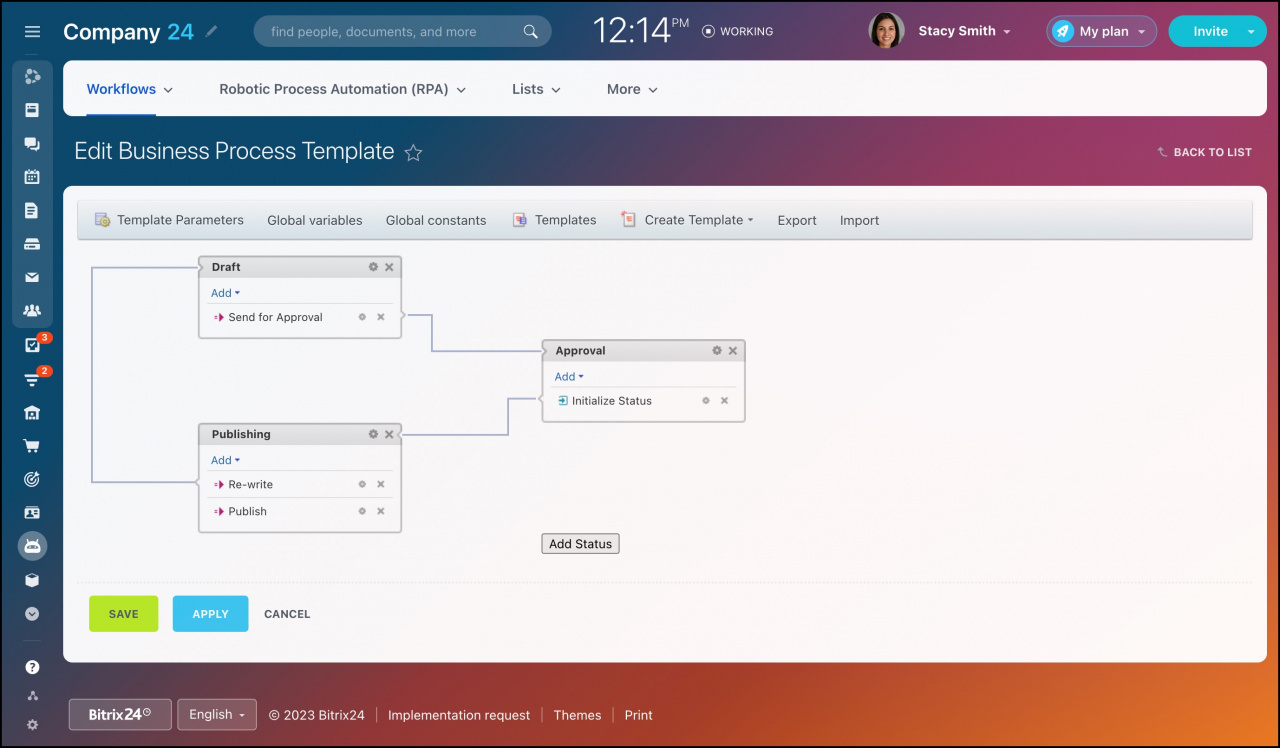Workflows are a tool that can be used to automate various tasks in a company: approving vacations, coordinating work with documents, processing leads, and so on. There are two types of workflows in Bitrix24: sequential and with statuses.
The sequential process is suitable for simple tasks where participants need to perform actions in a predetermined order. The process with statuses is needed for complex projects that consist of several stages.
Sequential workflow
A sequential workflow consists of a set of actions that are performed in order: each step in the process begins only after the previous step has been completed. For example, to approve a contract, it is first checked by the head of the department, then by a lawyer, and then signed by the head of the company.
Create a sequential workflow template
Status driven workflow template
A workflow with statuses consists of several sequential workflows that are linked to each other. There can be different stages and conditions that depend on the change of statuses. Depending on the outcome of each step, the process can follow different scenarios.
For example, this type of process would be suitable if you have to go through several stages to close a deal with a customer. There will be a separate status for each stage.
Each step in the workflow involves specific employees with their own roles.
Status Driven Business Process Template
- Workflows are a tool that can be used to automate various tasks in a company: approving vacations, coordinating work with documents, processing leads, and so on.
- There are two types of workflows in Bitrix24: sequential and with statuses.
- The sequential process is suitable for simple tasks where participants need to perform actions in a predetermined order. For example, to approve a contract.
- A process with statuses consists of several sequential processes. It is needed for complex projects that consist of several steps.
In brief:
Related articles:




